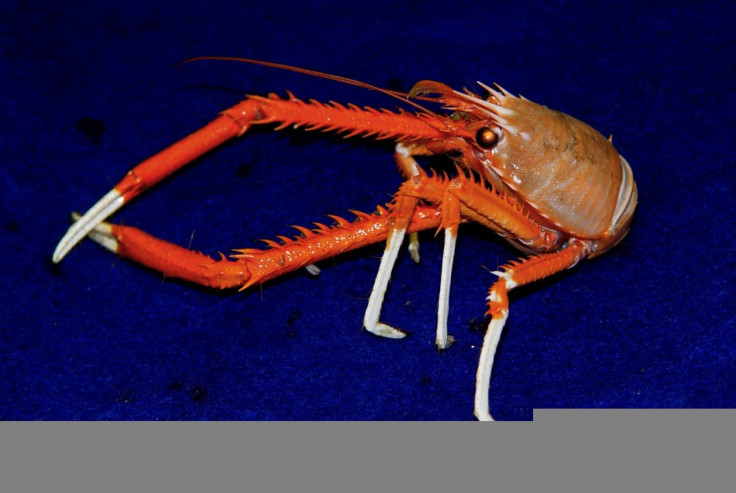UV Vision Helps Crabs See On Ocean Floor

How do you see in the dark? Crabs that below a half a mile of water, have developed a novel method: their eyes detect shorter wavelengths of light, particularly blue and ultraviolet, which helps them pick out the glowing morsels of food on the ocean floor.
Researchers from Nova Southeastern University in Florida, Duke University, and the University of Maryland Baltimore County used a technique called electroretinography to see what spectrums of light the eyes of eight kinds of deep-sea crustaceans are adapted to seeing.
It's often hard to study the eyes of deep-sea creatures, since bringing up into full daylight at the surface can irreparably damage them. So the scientists captured crabs using a submersible, then put the crustaceans in special protective containers. In a lab onboard a ship, they recorded the crabs' eye responses to different colors and intensities of light.
They found that eight kinds of crab were sensitive to blue light, and two of the species -- Eumunida picta and Gastroptychus spinifer, which are two kinds of squat lobster -- had eyes that were sensitive to blue and ultraviolet light, according to a paper published on Thursday in the Journal of Experimental Biology.
But what use is any kind of sight in a dark world?
"Call it color-coding your food," Duke biologist Sonke Johnsen said in a statement on Thursday. The crabs probably use their sensitivity to ultraviolet and blue light in order to "sort out the likely toxic corals they're sitting on, which glow, or bioluminesce, blue-green and green, from the plankton they eat, which glow blue."
The researchers need to collect more crabs and see how they react to even shorter wavelengths of light to test their color-coding hypothesis.
There's also the problem of being able to observe the crabs in their natural state.
"Our subs, nets and ROVs greatly disturb the animals, and we're likely mostly getting video footage of stark terror," Johnsen said in a statement. "So we're stuck with what I call forensic biology. We collect information about the animals and the environment and then try to piece together the most likely story of what happened."
SOURCE: Frank et al. "Light and vision in the deep-sea benthos I: Vision in Deep-sea Crustaceans." Journal of Experimental Biology published online Sept. 6.
© Copyright IBTimes 2025. All rights reserved.





















